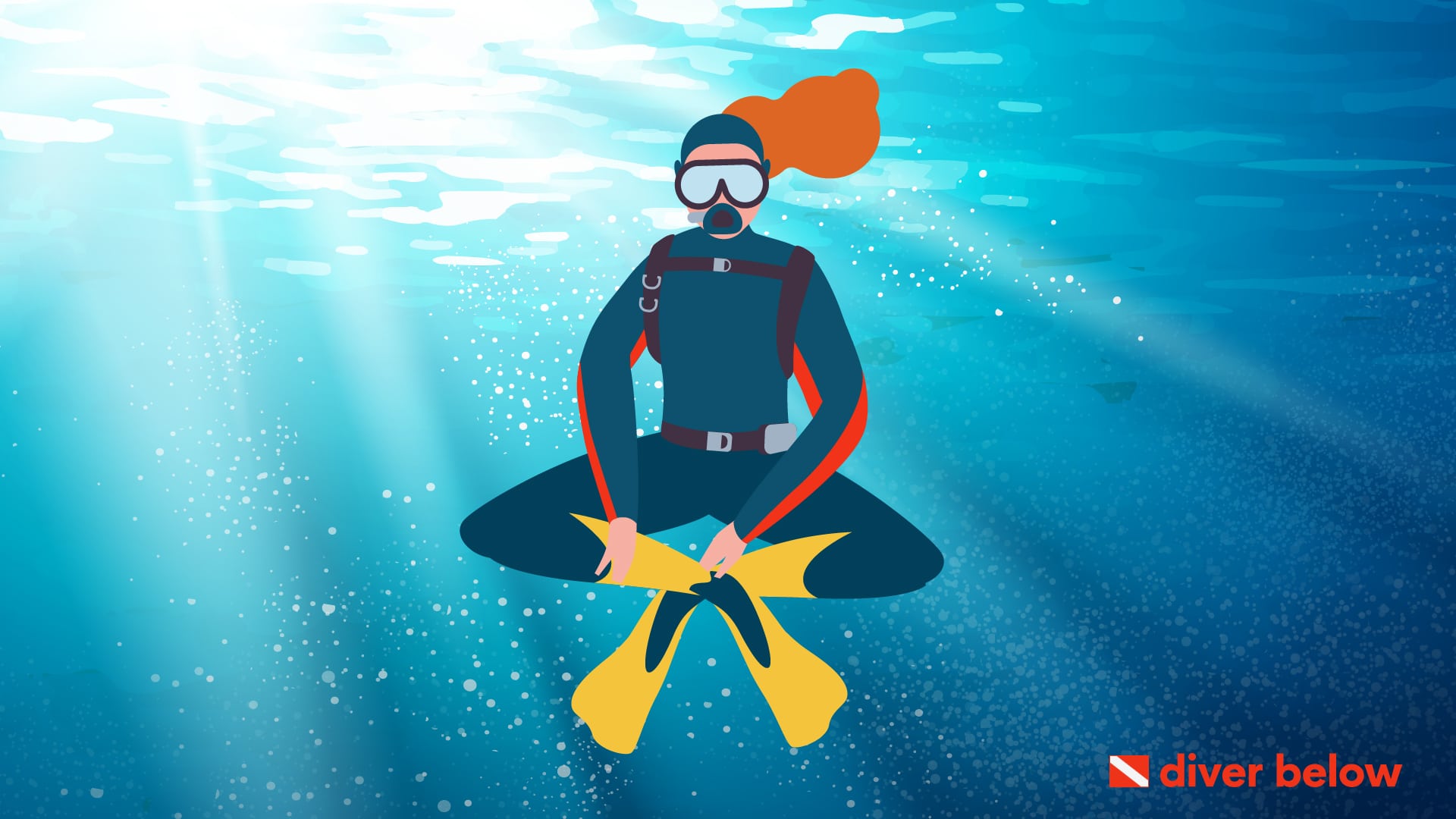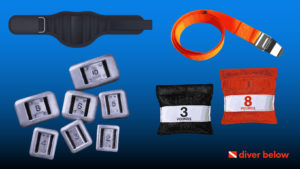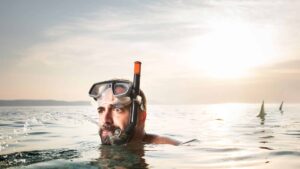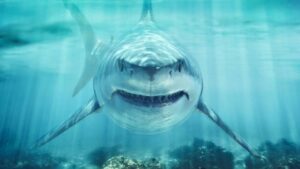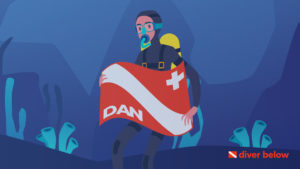Have you ever noticed how many fish species can simply suspend themselves in water without needing to swim or move to maintain their position?
Or how some scuba divers seem to be able to effortlessly hang in the water, hovering at their desired depth, without expending a lot of effort?
The secret is buoyancy.
Fish have a unique organ called a swim bladder that allows them to control their depth in the water, but humans have to learn it.
Here’s what is buoyancy and why it matters.
Contents
What is Buoyancy?
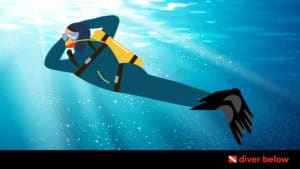
Buoyancy is the ability to manage the upward pressure of a liquid against the downward force of weight.
When something is highly buoyant, like a ping-pong ball or a wine cork, it floats on the surface of the water.
When something isn’t buoyant, it sinks like a stone or a lead weight.
Divers seek to manage their buoyancy to control the degree to which they float or sink, so they can choose and manage their depth in the water.
[testimonial author=””]Pro Tip
To figure out how much weight you need, check out a scuba diving weight calculator.
These tools make estimating weight amounts quick, easy, and painless.[/testimonial]
Why Does Buoyancy Matter when Scuba Diving?
Learning to control your buoyancy is one of the most advanced skills of scuba diving.
Scuba divers train themselves to achieve neutral buoyancy – the ability to remain at your desired depth and in your desired position) throughout the dive.
For example, a diver who has buoyancy control can remain upright in a kelp forest, hover horizontally a few feet above the bottom, or hang in the middle of the water column during their dive.
It also allows divers to move forward and backward in the water with greater control and precision.
Divers use both their equipment and their skill to control their buoyancy. Buoyancy means balancing:
Ballast Weight
Most divers carry some form of dive weights that help them sink during a dive.
Weights can be carried or attached to various parts of the body, assisting divers to reach their desired depth.
The placement of weights affects:
1. Trim
This is the diver’s body position when floating in the water.
Some divers want to hover horizontally, others want to be positioned vertically, and the trim is affected by the amount and placement of their weights.
2. Tank size and pressure
A full scuba tank is a significant weight and can help a diver sink.
However, throughout a dive, the tank gradually empties and gets lighter, creating more upthrust over time.
3. Dive suit
Most dive suits are made of neoprene, a form of rubber that naturally floats on water.
However, throughout a descent, neoprene compresses and loses buoyancy.
4. Breath
Your lungs are naturally buoyant and can create about 10 pounds of lift when full.
Experienced divers control the overall amount of breath in their lungs and the depth of each breath to control buoyancy.
5. Buoyancy compensator
A buoyancy compensator is the human version of the swim bladder.
It’s diving equipment with adjustable buoyancy.
A diver can add or remove air from the device during a dive, manually controlling their buoyancy.
Learning all the different equipment and how buoyancy changes throughout a dive, practicing breathing and control can take time and skill to master.
Every diver wants to have power during a dive and have easy control – to make diving enjoyable and effortless. And that’s what buoyancy control can give you.
What Other Factors Affect Buoyancy?
There is no single simple solution for buoyancy, and no best practice that works for everyone is that buoyancy is also affected by other factors independent of practice or equipment.
Key buoyancy factors include:
The Diver’s Body Type
Fat is more buoyant than muscle.
Therefore, divers with a lower body fat percentage will sink more quickly, while divers with more body fat may need more weight.
Body fat distribution can also affect trim in the water.
The Water’s Salinity
The dissolved salts in seawater provide more upward thrust and increase a diver’s buoyancy.
As a result, people sink more quickly in freshwater than they do in the ocean.
It also means that high-salinity water, like that found in salt lakes, has more upthrust than standard seawater.
It’s worth remembering that not all natural seawater has the same salinity: the Mediterranean Sea, for example, has a higher salinity than the Baltic Sea.
Wrapping Up
Buoyancy is simply a measure of the degree to which something sinks in water, and it depends on your body and the water in question.
However, buoyancy control is the reward of practice and skill in scuba diving – the ability to hover or move effortlessly in the water, with control of your depth and body position.
It’s a great skill to master.
